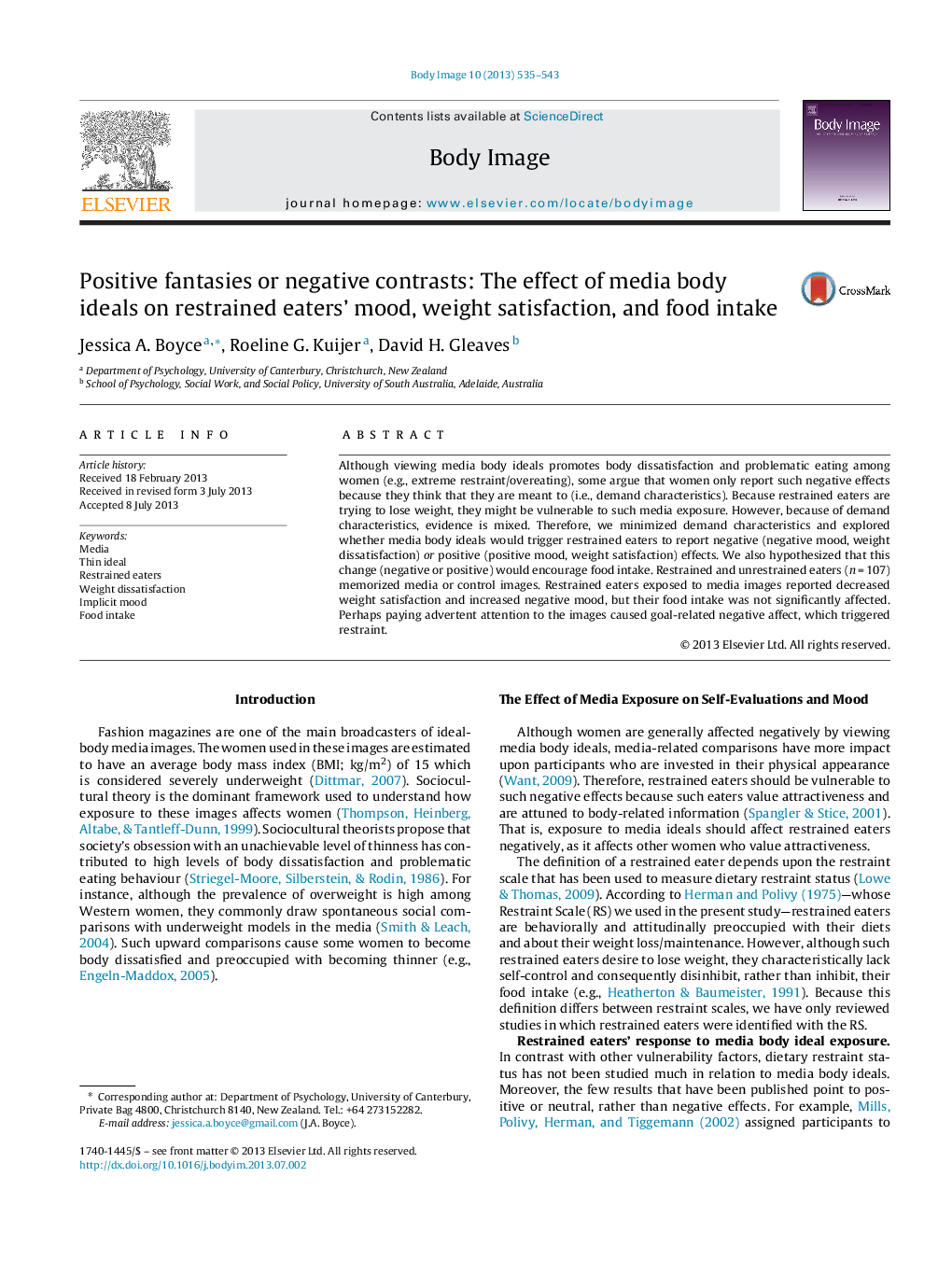| Article ID | Journal | Published Year | Pages | File Type |
|---|---|---|---|---|
| 902903 | Body Image | 2013 | 9 Pages |
•We investigated restrained eaters’ response to viewing media body ideals.•We minimized demand characteristics with a two-study pretext and cover story.•Restrained eaters’ satisfaction and mood were negatively affected by media images.•Restrained eaters’ food intake was not affected by media images.•We reasoned that such negative affect encouraged restrained eaters’ dietary restraint.
Although viewing media body ideals promotes body dissatisfaction and problematic eating among women (e.g., extreme restraint/overeating), some argue that women only report such negative effects because they think that they are meant to (i.e., demand characteristics). Because restrained eaters are trying to lose weight, they might be vulnerable to such media exposure. However, because of demand characteristics, evidence is mixed. Therefore, we minimized demand characteristics and explored whether media body ideals would trigger restrained eaters to report negative (negative mood, weight dissatisfaction) or positive (positive mood, weight satisfaction) effects. We also hypothesized that this change (negative or positive) would encourage food intake. Restrained and unrestrained eaters (n = 107) memorized media or control images. Restrained eaters exposed to media images reported decreased weight satisfaction and increased negative mood, but their food intake was not significantly affected. Perhaps paying advertent attention to the images caused goal-related negative affect, which triggered restraint.
